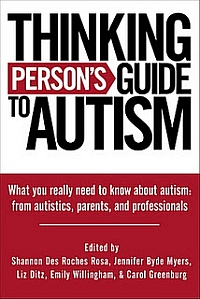 It could be said that it all begins in the womb. It is even deeper and more subtle than that. Autism researchers such as Simon Baron-Cohen are coming to the conclusion that a mother’s testosterone levels are influencing the likelihood of autism. I came to this same conclusion ten years ago exploring the work of Norman Geschwin and Charles Darwin. Noting this effect while exploring the impact of sexual selection on social structure provides additional perspective. Observing the relationship between social structure and evolution, one begins to understand that what goes on in the womb can decide the direction we evolve.
It could be said that it all begins in the womb. It is even deeper and more subtle than that. Autism researchers such as Simon Baron-Cohen are coming to the conclusion that a mother’s testosterone levels are influencing the likelihood of autism. I came to this same conclusion ten years ago exploring the work of Norman Geschwin and Charles Darwin. Noting this effect while exploring the impact of sexual selection on social structure provides additional perspective. Observing the relationship between social structure and evolution, one begins to understand that what goes on in the womb can decide the direction we evolve.
Mother’s testosterone levels > progeny maturation rate > social structure proclivity > evolutionary trajectory.
The higher the mother’s testosterone levels, the more likely the male children will have maturational delay and the females maturational acceleration. The males’ testosterone levels will be relatively lower compared to boys born from mothers with low testosterone levels. The females’ testosterone levels will be relatively higher compared to girls born from mothers with low testosterone levels.
When the mother’s testosterone levels are high, she is propelling her children backwards in evolutionary time. Backwards in evolutionary time for humans is away from patrifocal social structure and towards matrifocal social structure. Males experience more maturational delay, females more maturational acceleration. A mother with elevated testosterone levels (a woman comfortable in a matrifocal society) sends her children on a journey to the society of her societal and evolutionary precursors.
Eventually, we go back far enough in time to when males were first acquiring facility with spoken language. Go back even further in time and females are first acquiring facility with spoken language. Hence the higher number of males exhibiting autism, Asperger’s, stuttering and other conditions characterized by maturational delay. Males don’t have to go very far back in time, compared to females, to begin wrestling with the origin of speech.
With this premise, one could come to the following conclusions. The older the mother grows, and the higher her testosterone levels, the more likely her male children will experience maturational delay, her girls maturational acceleration, and the more common autism will be. The youngest son, conceived when the mother is oldest, should exhibit a number of personality features associated with a matrifocal social structure vs. a more hierarchical, commanding, aggressive oldest male in the family. One might also consider that the youngest sons would be more graceful than the robust older sons, if there are physiological concomitants to social structure traits. For example, the matrifocal bonobo are slimmer and lighter, with longer legs than their close cousins, the chimpanzee.
For the same reason, one could hypothesize that lankiness would be common among autistic males.
You can see where I’m heading. Since a mother’s testosterone levels rise with her age, if the hormone variation is relatively extreme and she has children across the whole spread of the years that she can conceive, then we might observe an arc of features in her children that would roughly reproduce human evolution over a span of tens of thousands of years.
A mother’s testosterone levels can be impacted by a host of other factors, such as smoking, physical exercise, stress, exposure to light, alcohol consumption, diet, touch, etc. For example, if a mother grows fatter over the years, the weight gain will increase her testosterone levels, sometimes radically.
So, though it may seem like it all begins in the womb, consider all those variables that influence hormone levels in the womb. Beginnings become blurred if a multitude of factors influence that beginning. The characteristics of our children may in some cases have as much to do with the mother’s environment as her ancestral inheritance.
The womb may be only the beginning….of the beginning.
…
Proceed to author’s FREE book download on this subject (The book is called Evolution, Autism and Social Change). 10 minute introductory video here.
Andrew Lehman on 10/22/09 in Evolution, featured | No Comments | Read More

